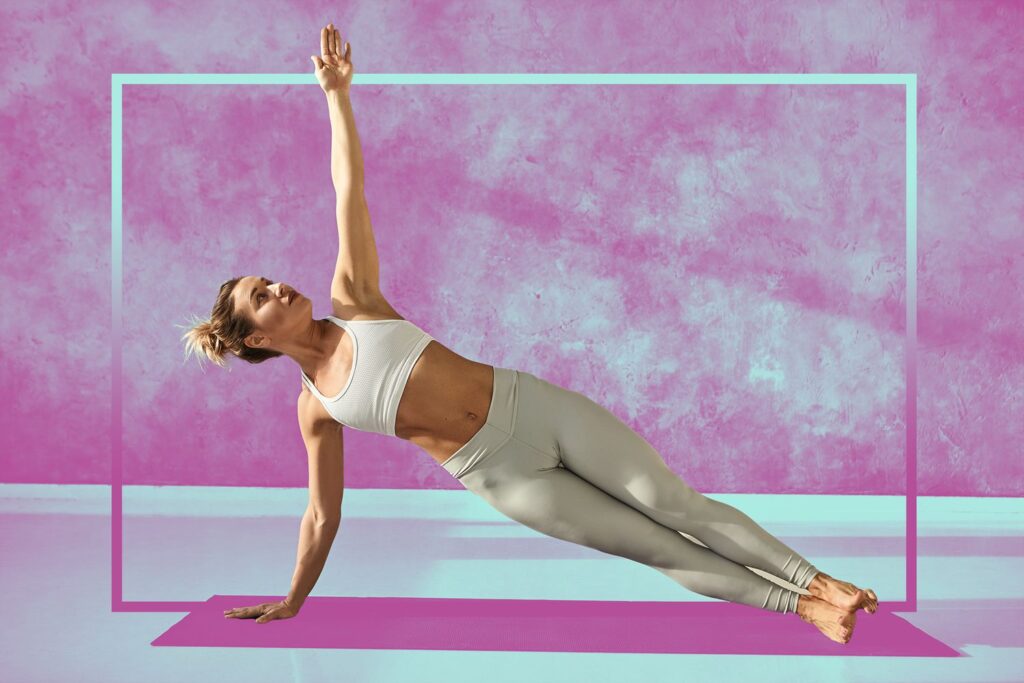Two classic exercises keep proving to be gold standards of core strengthening: the crunch, which firms the more superficial abs — the rectus abdominis down the center and the obliques along the sides — and the plank, which works the deep, corset-like transverse abdominis.
Learn the research-backed benefits of crunches and planks, how to do them, and ways to add some crunches and plank variations to torch your core further and add more variety to your routine.
Benefits of Crunches
The crunch is so effective at activating the superficial ab muscles because their fibers all have a vertical orientation that lets them be in sync with the exercise’s straight-up motion, says Martin Eriksson-Crommert at Örebro University in Sweden. His research found that women who place their hands behind their head, instead of atop their chest or reaching forward, get the biggest activation.
Core Muscles Targeted by Crunches
The main ab muscles worked by crunches are:
- Rectus abdominis, a long ab muscle down the central front of the body
- Obliques, the thin, flat muscles along the sides of the abdomen
If you want to target the central abs, crunches are key. A small study in the International Journal of Exercise Science that used ultrasound equipment to check muscle engagement during several core moves found that the rectus abdominis was most activated when doing crunches compared to sit-ups or leg raises.
Plus, a little goes a long way: Research suggests that doing crunches, even just one day a week, can help improve ab muscle endurance.
How to Do a Crunch
Follow these instructions from Kayla Jeter, an NASM-certified personal trainer and certified functional strength coach:
A. Lie on the floor with knees bent and feet flat on the floor; press the small of the back into the ground.
B. Hold fingertips lightly behind head. Exhale to engage core muscles and lift upper shoulders, neck, and head off the ground.
C. Inhale as you lower back down — that’s one rep.
Crunch Variations
Speeding up the pace of crunches can double the activation of the rectus abdominis. Add a twist to further engage obliques.
Benefits of Planks
Planks are powerful moves that target multiple core muscles at the same time. This includes the back and shoulders as well as both superficial and deep core muscles. It only takes about 10 to 30 seconds of holding a plank to offer strong core engagement.
Core Muscles Targeted by Planks
The muscles worked by planks include both superficial and deep core muscles:
- Transversus abdominis, a deep ab muscle that runs horizontally across the abdomen
- Rectus abdominis
- Obliques
How to Do a Plank
For a standard plank, follow these instructions from Bill Daniels, CSCS, NASM CPT, a certified strength and conditioning specialist and owner of Beyond Fitness Online:
A. Start on all fours with wrists stacked under shoulders and knees bent and under hips.
B. Screw pinkies into the ground and away from the body to activate lats. Pull belly button up towards spine to engage midline.
C. Step one foot back at a time into the push-up start position, with feet hip-width apart. Grind toes into the floor to engage the lower body and actively push palms into the floor to turn on the upper body.
D. Squeeze glutes and quads to maintain a straight line from head to heels. Hold.
Plank Variations
Now, try a series of moves to up the challenge. The variations shown here, plus the core-stability challenge of the double-leg stretch, elicit transverse activation that goes off the charts, according to lab research by Shape Brain Trust member Michele Olson, Ph.D., a senior clinical professor of sport science at Huntingdon College in Alabama who has tested ab exercises for over 20 years.
Work these exercises in with your crunches or any of other ab-focused routine for your fittest, firmest core.
- Spider Plank: Start on the floor in a plank position, balancing on your hands and toes. Keep hips level and bend left knee out toward left triceps [shown, left]. Return to plank, switch sides, and repeat to complete 1 rep. Do 2 sets of 10 to 12 reps.
- Double-Leg Stretch: Lie faceup on floor with arms by sides. Curl head and shoulders off floor, then raise arms overhead (biceps by ears) and legs up at 45-degree angle to start. Keeping upper body lifted throughout, bring knees toward chest and circle arms around, touching palms to outside of knees [shown, center]. Extend legs and raise arms overhead to starting position to complete 1 rep. Do 2 sets of 10 to 12 reps.
- Side Plank Twist: Start on floor in side plank position, balancing on left palm and sides of feet, right foot in front of left; bend right elbow and place palm behind ear to start [shown, right]. Rotate torso to bring right elbow to inside of left elbow. Return to starting position to complete 1 rep. Do 12 reps. Switch sides; repeat. (Want to keep going? Try the 10-minute abs workout Tone It Up’s Karena and Katrina swear by.)
Ab Routines with Built-in Core Tighteners
Looking for even more ways to challenge your core? Certain workouts double as strength sessions for your abs. “When you increase your intensity or load during total-body movements, your ab muscles naturally brace,” Olson says. “That action really works the transverse.” Here’s the way to multitask:
- Swing a kettlebell. Your transverse braces to stabilize your core as you bring the kettlebell’s swing to a full stop, especially during one-handed moves.
- Lift bigger dumbbells. Add a little more heft to your reps-weighted squats, biceps curls, yes, you name it-and “the heavier the load, the more bracing will occur,” Olson says. (On that note, here are 11 benefits of strength training.)
- Do sprintervals. Your abs will engage as you pump your arms harder, and the HIIT will help burn more ab fat than if you stuck with steady cardio.


